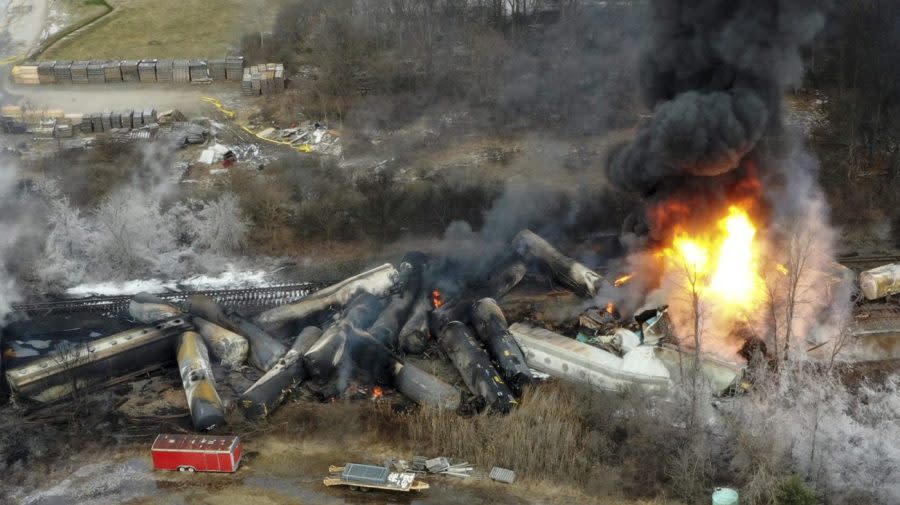East Palestine derailment chemicals reached 16 states: Research

The chemical plume from the February 2023 train derailment in East Palestine, Ohio, spread air pollutants to at least 16 states, according to research published Wednesday in the journal Environmental Research Letters.
The cloud, created as part of a controlled burn of the spilled chemicals, reached as far north as New England and possibly as far south as North Carolina, according to researchers from the Wisconsin State Laboratory of Hygiene at the University of Wisconsin-Madison. They found the overall radius spanned more than 540,000 square miles.
No one was injured or killed in the crash, which spilled toxic chemicals including vinyl chloride, but local residents complained of rashes and the deaths of animals, and have expressed concerns about potential long-term health impacts that may not have been evident in the immediate aftermath.
Researchers analyzed ground samples from between Jan. 31 and Feb. 14 of last year, a period spanning the time before and immediately after the Feb. 3 accident. They found evidence of high chloride concentration in states including Virginia, South Carolina and Wisconsin, as well as particularly high concentrations near Canada’s border with New York, an area downwind of the crash site. Although the pollutants dissipated in the weeks after the accident, they also found that the precipitation in the affected areas was less acidic than expected.
Precipitation in the Northeast is typically between 5.2 and 5.8 on the pH scale, which indicates more acidity, the lower the score; it was lower than that at the time of year the accident occurred. However, the researchers found unprecedentedly high, or more basic, pH values across a broad belt in the Midwest and Northeast. They also found levels of elevated alkaline and earth metals, in some cases within the 99th percentile of measurements for the last decade.
“All of these pollutants are important in the environment because their accumulation has an impact on the Earth’s aquatic and terrestrial environments in many ways,” lead author David Gay, lead researcher and coordinator of the National Atmospheric Deposition Program, said in a statement.
Copyright 2024 Nexstar Media, Inc. All rights reserved. This material may not be published, broadcast, rewritten, or redistributed.
For the latest news, weather, sports, and streaming video, head to The Hill.

